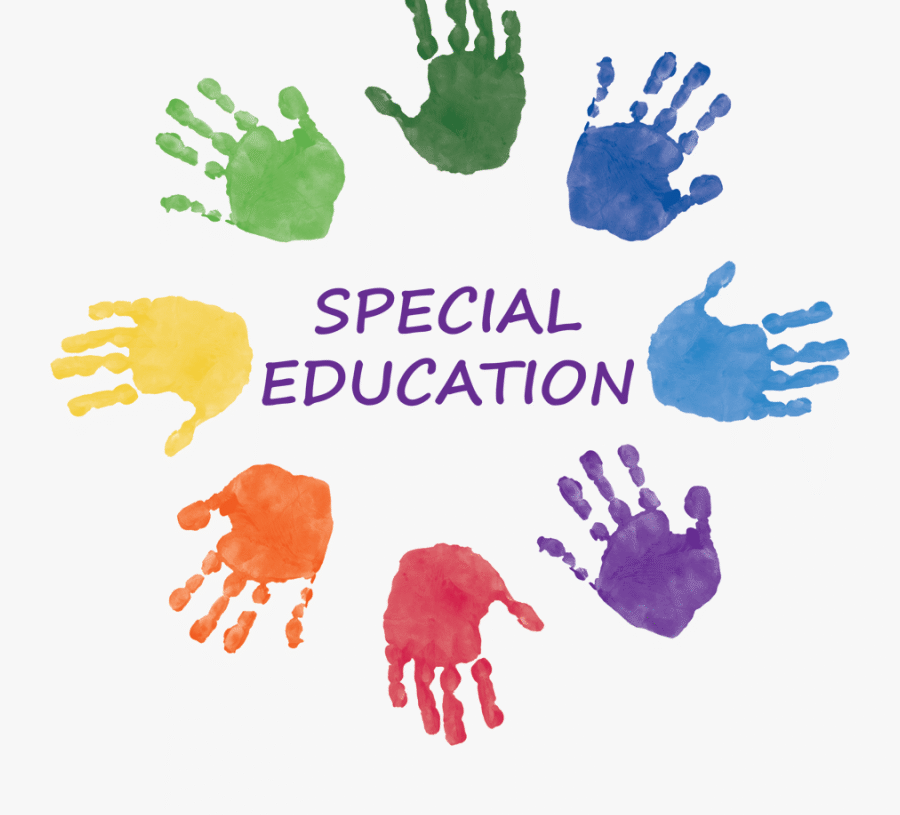Personalized Learning: Meeting Diverse Needs
The increasing number of students requiring specialized instruction underscores the vital importance of customized educational approaches. Recognizing these evolving trends enables educators and communities to better address a wide spectrum of learning requirements.
The Growing Need for Individualized Programs
Education is seeing a significant shift towards personalized learning methods. The rising number of students who need special education highlights how important it is for the education system to accommodate different learning styles and needs. This trend emphasizes the need to better understand and implement Individualized Education Programs (IEPs). These programs are essential for tailoring education to meet the specific challenges and strengths of each student. By focusing on personalized strategies, educators can create a more inclusive and effective learning environment. This ensures that every student has the opportunity to succeed. The shift towards individualized education marks a crucial step in making education more equitable and responsive to the diverse needs of all learners.
Trends in Enrollment and Funding
There has been a notable increase in the number of students identified as needing special education services. For example, when looking at students with speech-related needs, enrollment has consistently risen. This increase in demand is often linked to fluctuating, yet ultimately increasing, levels of financial support for these essential services. The ability to provide adequate resources is critical to support the growing number of students who need special education.
Optimizing Support Systems
Experts note that while funding for special education is increasing, it often doesn’t keep pace with the overall growth in educational funding. As a result, it’s important to focus on implementing effective, multi-tiered systems of support that address each student’s unique needs. This approach ensures that all learners have the chance to reach their full potential. By prioritizing efficient and targeted support, educators can maximize the impact of available resources. This helps create a more equitable and supportive learning environment for every student. The key is to use a comprehensive strategy that combines adequate funding with effective implementation, ensuring that no student is left behind.
Fostering Inclusion: Education Beyond the Classroom
Inclusive education is evolving into a system that goes beyond simply integrating students with disabilities into mainstream classrooms. It’s a holistic approach that focuses on promoting the academic, social, and emotional development of every student, regardless of their background or abilities.
Understanding the Expansion of Special Education
The number of students requiring special education services is growing significantly. Recent data shows a substantial increase in students eligible for services under the Individuals with Disabilities Education Act (IDEA). This highlights the urgent need for specialized instruction and resources. As the demand for special education services continues to rise, it becomes increasingly important to develop educational strategies that can effectively meet the diverse needs of all students. This includes providing targeted support, creating inclusive learning environments, and ensuring that all students have the opportunity to succeed. The growth in special education underscores the importance of ongoing innovation and adaptation in the field of education.
Allocating Resources Effectively
As the student population grows, so does the need for additional funding. An increase in federal funding per IDEA student indicates a move towards better resourcing. However, fully supporting inclusive education requires continuous effort and investment to bridge the gap between allocated funds and actual needs. By strategically allocating resources and investing in effective programs, educational institutions can create a more inclusive and supportive learning environment for all students. This includes providing professional development for teachers, implementing evidence-based practices, and ensuring that all students have access to the resources they need to succeed.
Addressing the Broader Context
The rise in students with disabilities is happening even as overall public school enrollment declines, emphasizing the critical need for comprehensive and inclusive approaches. These strategies must extend beyond the classroom to ensure comprehensive development, creating a more supportive and equitable learning environment for everyone. This holistic approach recognizes that students’ needs go beyond academics and includes their social, emotional, and physical well-being. By addressing the broader context of students’ lives, educators can create a more supportive and effective learning environment that helps all students thrive.
Assistive Technology: Transforming Learning Experiences
Assistive technology is changing special education by promoting inclusion and personalized learning. These tools empower students and revolutionize classrooms.
Customization and Improved Access
Educators are increasingly using assistive technology to customize instruction for students with diverse needs. From laptops and tablets to specialized software, these tools enable customized content delivery and pacing. This ensures that every student can access and engage with the curriculum effectively. Assistive technology helps create a more equitable learning environment by providing students with the tools they need to overcome barriers and succeed. By tailoring instruction to meet individual needs, educators can unlock students’ full potential and promote academic achievement.
Reducing Anxiety and Enhancing Support
Assistive technology plays a crucial role in creating a more supportive learning environment. For example, color-coded math programs can reduce anxiety in students with autism. Amplifiers and personalized aids provide crucial support for visually or hearing-impaired students, fostering a sense of inclusion and empowerment. These tools not only improve academic outcomes but also promote students’ emotional well-being. By creating a more inclusive and supportive learning environment, assistive technology helps students feel valued, respected, and empowered to succeed.
Promoting Independence and Engagement
Assistive technology empowers students to participate more independently in advanced learning tasks. By providing the necessary tools and support, these technologies help students overcome challenges and achieve their full potential. This leads to increased confidence and a greater sense of accomplishment. When students are able to participate more independently, they develop a sense of ownership over their learning. This can lead to increased motivation, engagement, and academic success. Assistive technology helps students build the skills and confidence they need to thrive in school and beyond.
Simple Tools, Big Impact
Assistive technology isn’t always about complex electronic devices. Simple tools, like teacher-worn amplifiers, can significantly enhance the classroom experience for students with hearing impairments. These low-tech solutions demonstrate that even small changes can have a profound impact. By focusing on practical and accessible solutions, educators can make a big difference in the lives of students with disabilities. These simple tools can improve communication, reduce frustration, and promote a more inclusive learning environment. The key is to identify the specific needs of students and find the tools that best address those needs, regardless of how complex or simple they may be.
Prioritizing Potential
School districts are increasingly prioritizing assistive technology to unlock the potential of students with special needs. This commitment is yielding positive results in classroom management, confidence-building, and social integration, creating a more equitable and supportive learning environment for all. By investing in assistive technology, schools are demonstrating their commitment to creating inclusive and equitable learning environments. This investment not only benefits students with disabilities but also enhances the learning experience for all students. The goal is to create a school culture that values diversity, promotes inclusion, and supports the success of every student.
Rehabilitation Training: Building Essential Life Skills
Rehabilitation training plays a vital role in equipping students with disabilities with essential life skills. These programs aim to promote independence and enhance their ability to navigate daily challenges, setting the stage for a more inclusive and equitable society.
Examining Enrollment Trends
The landscape of special education is constantly evolving, with shifts in enrollment reflecting changing needs and approaches. There has been a noticeable increase in the number of students classified as having a disability or other health-related issues. This rise underscores the growing demand for specialized services and rehabilitation training tailored to life skills development. As the number of students with disabilities continues to grow, it becomes increasingly important to provide comprehensive rehabilitation training that addresses their unique needs. This training should focus on developing the skills and knowledge students need to live independently, participate in their communities, and achieve their full potential.
Investing in Specialized Services
Increased enrollment often requires greater financial investment to support effective programs. In some regions, funding saw a notable increase, signaling a commitment to enhancing resources for students with diverse needs. These funds can facilitate the implementation of innovative strategies and provide access to crucial support systems. Adequate funding is essential for providing high-quality rehabilitation training that meets the diverse needs of students with disabilities. This funding should be used to support a range of services, including individualized instruction, assistive technology, and community-based training programs. By investing in specialized services, educational institutions can help students with disabilities develop the skills and knowledge they need to succeed in life.
Adapting Educational Approaches
While some categories experience growth, others may see fluctuations. For example, the category of hearing-impaired and students with severe behavioral issues experienced a rebound in enrollment after a previous decline. Such shifts highlight the importance of adaptive and holistic approaches in special education, ensuring that all students receive appropriate and individualized support. Flexibility and adaptability are key to providing effective rehabilitation training for students with disabilities. Educational institutions must be prepared to adjust their programs and services to meet the changing needs of their students. This includes providing ongoing professional development for teachers, implementing evidence-based practices, and collaborating with families and community partners.
Providing Comprehensive Training
The ultimate goal is to prepare students for meaningful participation in daily life and future employment. This involves comprehensive, individualized training programs that address not only academic skills but also practical life skills. These programs help students build confidence, develop independence, and unlock their full potential. Comprehensive training programs should focus on developing a wide range of skills, including communication, problem-solving, self-advocacy, and vocational skills. These programs should also provide opportunities for students to practice their skills in real-world settings, such as in their homes, communities, and workplaces. By providing comprehensive training, educational institutions can help students with disabilities achieve their goals and live fulfilling lives.
| Category | Enrollment FY 2022 | Enrollment FY 2023 | Enrollment FY 2024 | Funding FY 2022 (USD million) | Funding FY 2023 (USD million) | Funding FY 2024 (USD million) |
|---|---|---|---|---|---|---|
| Disability, other health-minor | 137,634.63 | 139,990 | 164,798.57 | 287.4 | 274.2 | 365.179 |
Data source: Ohio Department of Education, “Ohio 2024 Special Education Profile 2024” April 2025
According to data from the Ohio Department of Education, enrollment in the category of “Disability, other health-minor” has increased from FY 2022 to FY 2024, accompanied by a corresponding rise in funding. This increase reflects a growing need for specialized services and support for students with diverse health-related challenges, highlighting the importance of allocating resources to meet their unique needs.
Nurturing Wellbeing: Psychological Support for Students
It is crucial to understand the mental health needs of students in special education. It is important to explore ways to support their psychological wellbeing alongside their academic growth.
Understanding the Needs
Students with learning disabilities make up a significant portion of those receiving special education services. Beyond academic support, these students often require help for anxiety, depression, and behavioral challenges. A holistic approach is key to addressing both their educational and psychological needs. By recognizing the interconnectedness of academic and mental health, educators can create a more supportive and effective learning environment. This approach involves providing access to mental health services, implementing trauma-informed teaching practices, and fostering a culture of empathy and understanding.
Key Support Services
Many students benefit from various special education services. Resource room support and inclusive classroom settings are utilized by a majority, but speech and language therapy, occupational therapy, and behavioral interventions also play vital roles. These services are essential for addressing the diverse needs of students with learning disabilities and promoting their overall well-being.
Integrating Support Systems
Experts highlight the need for multi-tiered systems of support, early intervention, and family engagement. Trauma-informed teaching also stands out as an essential strategy. By integrating mental health support with educational practices, we can help students thrive academically and emotionally. A collaborative approach that involves educators, mental health professionals, families, and community partners is essential for creating a comprehensive support system. This system should be designed to identify students’ needs early, provide targeted interventions, and promote a culture of support and understanding. By working together, we can create a more equitable and supportive learning environment where all students can thrive.
Q&A
Question 1: How is funding for special education changing, and is it keeping pace with the rising enrollment?
Answer: Funding for special education is generally increasing, but often lags behind the overall growth in educational funding. While federal funding per IDEA student has increased, the provided data from Ohio shows fluctuating funding levels for specific categories like speech-only services. The text emphasizes the need for continued investment to adequately support the growing number of students requiring special education services.
Question 2: What role does assistive technology play in improving the learning experience for students with special needs?
Answer: Assistive technology is transforming special education by enabling customized instruction, improving accessibility, and fostering inclusivity. It reduces anxiety (e.g., color-coded math programs for autistic students), provides crucial support for students with visual or hearing impairments (e.g., amplifiers), and empowers independent participation in learning. This includes both high-tech solutions (laptops, specialized software) and low-tech solutions (teacher-worn amplifiers).
Question 3: Beyond academic support, what other crucial elements are highlighted for supporting students with special needs?
Answer: A holistic approach is crucial, encompassing not only academic support but also comprehensive social, emotional, and psychological well-being. This includes rehabilitation training for life skills to foster independence, and addressing mental health needs like anxiety and depression often associated with learning disabilities. Multi-tiered systems of support, early intervention, family engagement, and trauma-informed teaching are all emphasized as essential strategies.







